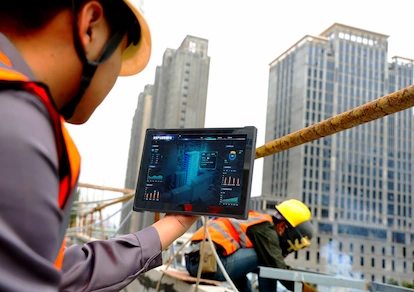
In today's fast-paced world, technology has become an integral part of our lives. It has revolutionized the way we work, communicate, and learn. Architects and engineers are no exception to this trend. In fact, they often rely on technology to create and design buildings, bridges, roads, and other structures. Good tablet for architects and engineers is a must-have tool to enhance productivity, creativity, and accuracy. In this article, we will explore the benefits of a good tablet for architects and engineers and guide you on how to choose the right one for your needs.

Why a Good Tablet Is Essential for Architects and Engineers?
Portability
One of the biggest benefits of a good tablet for architects and engineers is its portability. Tablets are lightweight and easy to carry around. You can take them anywhere you go, whether you're at a construction site, a meeting, or traveling. With a tablet, you can have access to your designs, plans, and notes at all times, which can save you time and increase your productivity.

Drawing and Designing Abilities
A good tablet for architects and engineers is equipped with advanced touch screen technology and a stylus pen that allows you to draw, sketch, and annotate your designs on the go. You can create 2D and 3D models, add textures, colors, and layers, and make changes and corrections in real-time. This can help you visualize your ideas, communicate them to clients and team members, and make informed decisions.
Efficient Communication
With a tablet, architects and engineers can communicate more efficiently with their colleagues, clients, and contractors. They can share designs and files instantly, collaborate on projects in real-time, and get feedback and approvals quickly. This can save time, reduce errors, and improve the quality of work.

Increased Productivity
A good tablet for architects and engineers is designed to handle complex tasks and applications smoothly and efficiently. It can run various design software, such as AutoCAD, SketchUp, Revit, and 3D Studio Max, without any lag or freeze. This can speed up your workflow, help you meet tight deadlines, and increase your overall productivity.
How to Choose Good Tablet for Architects and Engineers?
Choosing the right tablet for architects and engineers can be challenging, given the plethora of options available in the market. However, there are some factors that you should consider before making a purchase:

Screen Size: The bigger the screen size, the larger the tablet will be and the more portable. Generally, a 10-inch tablet is an ideal size for architects and engineers. It is large enough to comfortably work on designs while still being portable.
Connectivity: It is important that the tablet has the necessary wireless capabilities for both internet access and sharing of designs and ideas. The most common connection types are 802.11 a/b/g/n Wi-Fi and Bluetooth. Most tablets also have a GPS receiver.
Operating System: Choose a tablet with a reliable operating system such as Windows 10 or iOS. Windows is ideal for anyone who wants to work with Microsoft Office programs such as Word, and Excel. Apple's iOS has a few features that make our work easier, such as the split-screen function.
Storage Space: Architects and engineers need plenty of storage space in order to store their projects and documents. Look for a tablet that has at least 64GB of storage space.
Speed (RAM): Architecture and engineering programs can be demanding, so it is important that the tablet has enough RAM for multitasking. The minimum requirement is 4GB of RAM; however, it is recommended that the tablet have 8GB of RAM.
Battery Life: The industrial tablet should have enough battery life to accommodate a full day's work without the need for constant recharging. A minimum of 8 hours of battery life is ideal, but you should also consider the tablet's battery life when it is connected to Wi-Fi and Bluetooth. (You may also want to contact rugged tablet manufacturers)
Accessories: Look for a tablet that comes with accessories such as a stylus and a keyboard, since these can be extremely useful for architects and engineers. Also consider other accessories for the tablet such as a sleeve to protect it.
By considering all these factors when shopping for a tablet, architects and engineers are sure to find the one that is perfect for their needs. With the right tablet, architects and engineers can design elegant and efficient projects from anywhere.
Good Tablet for Architects and Engineers:
The EM-T195 Rugged Tablet PC combines a solid structure with a slim profile and lightweight, light weight (650g), it can be conveniently and comfortably held by you with one hand for a long time, whether using the hand strap or not without feeling burdened. Easy-to-use outdoors in any weather. 10.1-inch display with enhanced anti-reflection technology for impressive clarity in bright lighting; ten-point touchscreen design Let you bid farewell to the tediousness of paper and pen records, and be able to make accurate notes directly on drawings, maps and documents.
In conclusion, a good rugged tablet for architects and engineers is a tool that can enhance their creativity, productivity, and efficiency. It offers portability, drawing and designing abilities, efficient communication, and increased productivity. When choosing a tablet, consider the operating system, display size and resolution, stylus pen, and battery life.
You may also be interested in these products:









